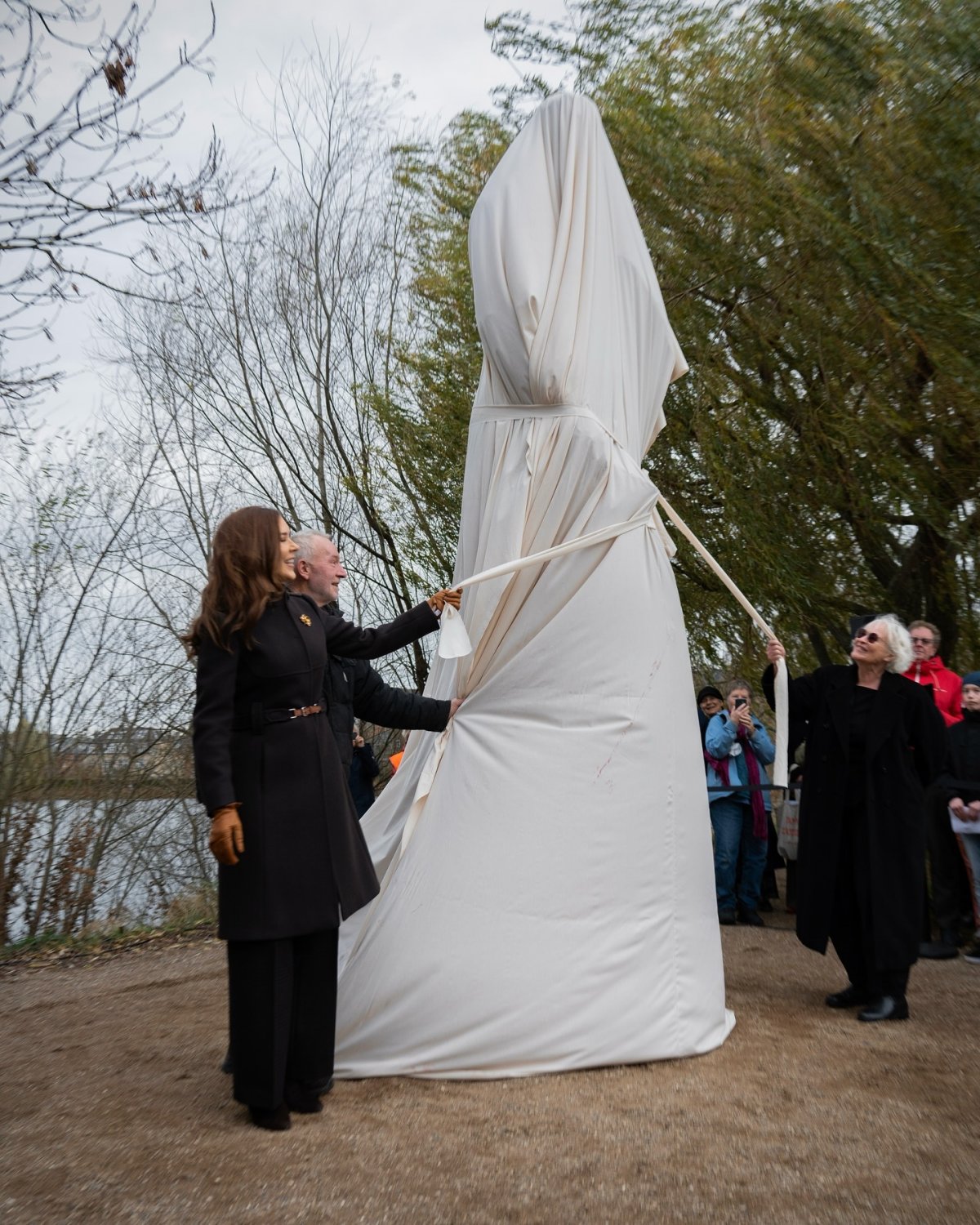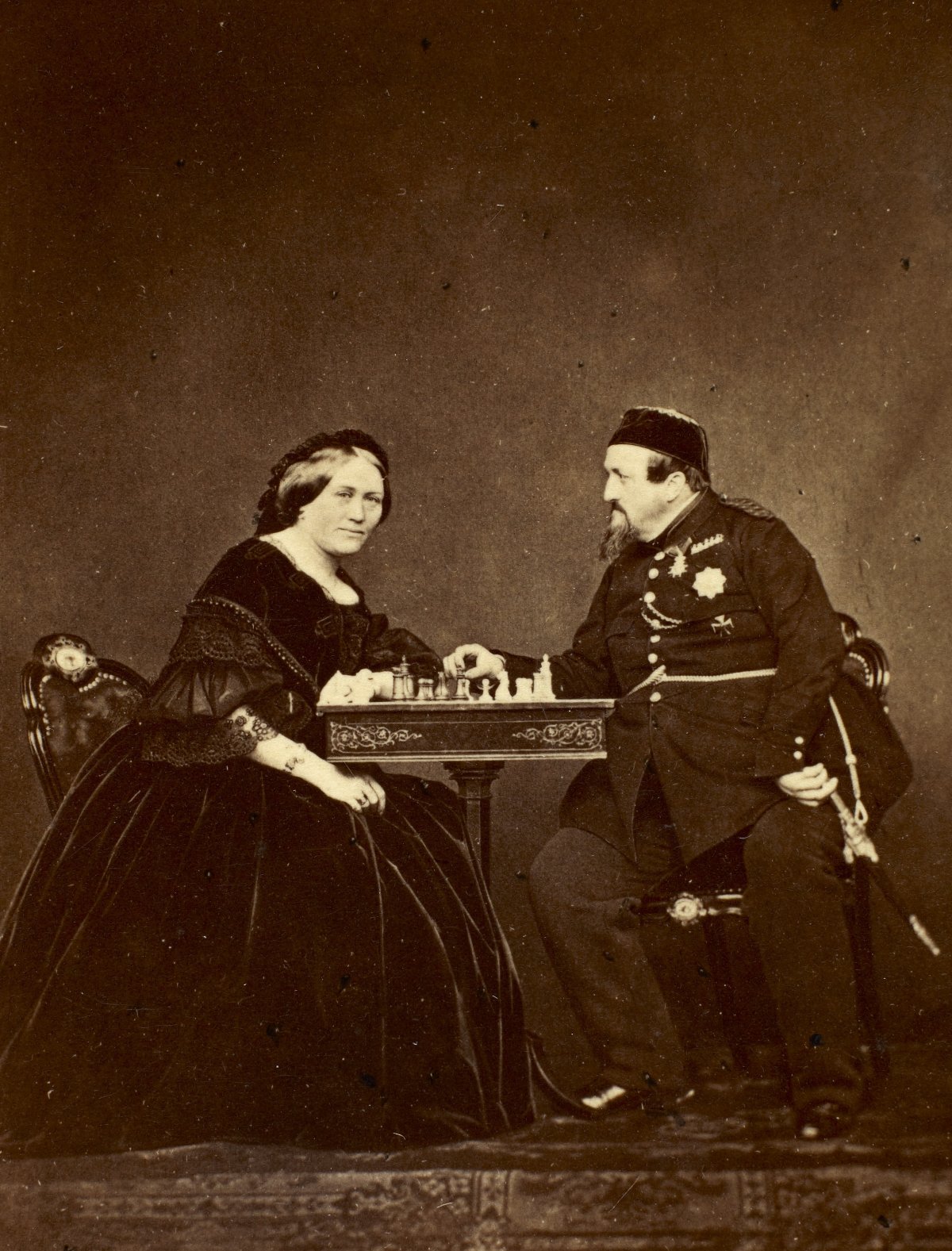
Queen Mary of Denmark stepped out in Copenhagen last week to honor Countess Danner, a little-remembered—and, in her day, quite controversial—member of the Danish royal family, wearing a brooch that came from her personal collection.

Queen Mary was in central Copenhagen on Monday, November 25 for the unveiling of a new statue honoring the legacy of another royal consort: Louise Christine Rasmussen, later known as Countess Danner. The statue is located at the intersection of two busy streets in the city center, Vester Søgade and Gyldenløvesgade.

Countess Danner was a Danish ballet dancer whose career reached its heights in Copenhagen in the 1830s. Born as the illegitimate daughter of a merchant and a maid, Louise enrolled in ballet school when she was just 11. Like so many dancers of her era, Louise was courted by wealthy men, including Carl Berling, whose father published one of Denmark’s most important newspapers, Berlingske Tidende. Carl and Louise had a son together, but they never married, and by the 1840s, she was pursued by an even more powerful man, the twice-divorced Crown Prince Frederik of Denmark.
In those days, marrying a commoner was a bridge too far for most monarchs. Frederik was the only direct heir to the Danish throne, with no children from either of his previous marriages, which meant that his personal decisions carried an extra burden of weight for the government and the nation. Regardless, after he ascended to the throne in 1848, King Frederik VII decided that he was going to marry Louise Rasmussen. Increased popularity among the Danish people gave him the latitude he needed to move forward. Frederik and Louise were wed in the chapel of Frederiksborg Castle on August 7, 1850. The marriage was morganatic, which meant that Louise did not become Queen of Denmark. She was given the title of Countess Danner instead.

Louise may have married the king, but the Danish aristocracy was not keen to accept her into their fold. Though Frederik attempted to integrate his new wife into high society in Copenhagen, the resistance was significant. Frederik particularly tried to convince his stepmother, Queen Caroline Amalie, to accept his wife, but she rebuffed the attempts. Regardless, Frederik and Louise seem to have had a genuinely happy home life, residing together at Jægerspris Castle not far from Copenhagen.
King Frederik VII died in 1863, and Countess Danner devoted much of the rest of her life to charity work. She was particularly interested in ways to improve the lives of girls and young women who were vulnerable because of their social or financial status—something that must have particularly resonated with Louise herself. She sponsored the construction of Danner House, a building in Copenhagen that now houses Danner, a humanitarian organization that works to create change for women and children exposed to violence.

The new statue dedicated to Countess Danner faces the building that houses the organization she helped to found. The bronze sculpture depicts a faceless woman, representing both Louise and the countless women whose lives she has impacted over the decades. The unveiling of the monument took place on the UN’s International Day for the Elimination of Violence against Women, and during the ceremony, Queen Mary noted, “Countess Danner’s history is also the history of Denmark. A monument is a memorial, and in Countess Danner’s case it will stand as a symbol of her importance for women’s liberation, social awareness and social mobility.”

For the statue unveiling, Queen Mary wore a dark wool coat (from Prada, per UFO No More) and trousers with gold accessory pieces, including earrings from Dulong.

The most special aspect of her ensemble, though, was the brooch pinned to her coat. The jewel is made of gold and set with citrines, amethysts, pearls, and diamonds.

The brooch belonged to Countess Danner herself. It’s part of a citrine parure, made by Danish court jeweler Julius Diderichsen. The set was a gift from King Frederik VII to Louise, possibly to celebrate her birthday in 1860. The suite includes a necklace, earrings, two bracelets, and two brooches. It was not retained by the royal family after her death, but the jewelry historian Trond Noren Isaksen explains the path that led it back to Rosenborg Castle, where it is now displayed alongside the Danish crown jewels: “On March 26, 1982, the citrine parure was purchased at an auction in Stockholm by the New Carlsberg Foundation, which has placed it on permanent loan to the Royal Collections.”

For the statue unveiling, Queen Mary chose to wear the top portion of the smaller brooch from the set. By all accounts, this is the first time that any royal woman has worn any of Countess Danner’s citrines in public.
Leave a Reply
You must be logged in to post a comment.